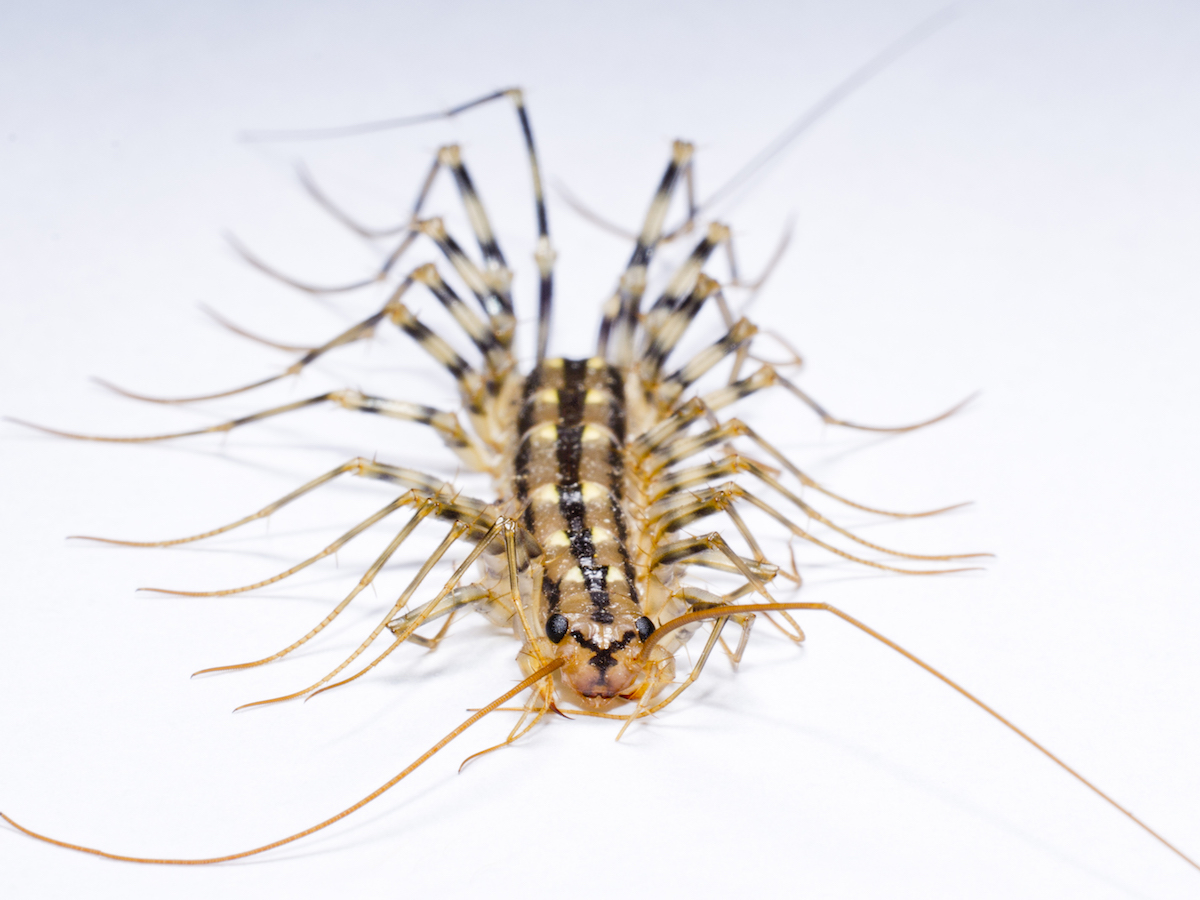Table Of Content
These monitors (and the service for identifying the specimens) can be obtained through a pest control company. Unlike the moths that eat wool and grain, termites that infest wood, and silverfish that destroy clothing fibers, glue, and paper, there is no real damage caused by house centipedes. So there are worse bugs to have in your home, even if they do tend to startle people when they zoom across the floor. This means eliminating roaches, silverfish, flies, moths and the other tasty insects that house centipedes love to snack on. Most live outside, primarily under large rocks, piles of wood and especially in compost piles.
Video: 8 Ways to Outsmart Bed Bugs While Traveling
Female house centipedes prefer the soil, where they can lay up to 35 eggs over a few days. House centipedes are active hunters, since they don’t build webs or traps. House centipedes live alone instead of establishing colonies, so tracking them without proper training can be difficult. Using natural ventilators — like open doors and windows — is perhaps the most efficient method. However, you’ll almost need to run a dehumidifier or a fan to dry areas prone to dampness.
There are bugs in my bathroom sink with many legs
The house centipede is capable of biting a human, but this seldom occurs. The worst one can usually expect from a house centipedes bite is some pain and a slight swelling at the location of the bite. However, the bite can cause health problems for those few who are allergic to the extremely mild venom of its bite, which is similar to that of most normal centipedes. The most common is the Scutigera coleoptrata, otherwise known as the house centipede.
How to kill centipedes
Common centipede’s venom won’t hurt cat, but its bites cause serious wounds - Northwest Arkansas Democrat-Gazette
Common centipede’s venom won’t hurt cat, but its bites cause serious wounds.
Posted: Mon, 01 Nov 2021 07:00:00 GMT [source]
It’s a localized sting and doesn’t offer lasting pain or problems unless you’re prone to severe reactions. They can’t regulate their temperature or stay hydrated, so it’s essential that wherever they live has lots of humidity and a warmer temperature. They can’t survive cold winters outside, so they must find a warm and stable environment. These many legs give them a hairy appearance, and it can be unsettling to see them moving about at great speed. It’s startling to see one on any surface, but just know they’re far more startled to see you.
Females can survive several years and produce up to 150 offspring. They tend to hide during daylight and come out at night to forage for prey. In an act of defence, when one of the house centipedes legs is held down, it drops that leg in hopes that the attacker will be distracted by the temporarily twitching appendage. Unlike most other centipedes, House Centipedes and their close relatives have well-developed, faceted eyes. They do not instantly change direction when light is suddenly shone at them, but will retreat to a darker hiding spot.
What Do Centipedes Eat?
Inside the home, they can be found in bathrooms and lavatories, which tend to be humid, but they can also be found in drier places like offices, bedrooms and dining rooms. They are usually seen crawling along the ground or floor, but they are capable of climbing walls. House centipedes feed on spiders, bed bugs, termites, cockroaches, silverfish, ants, and other household arthropods. These are not part of their mandibles, so strictly speaking they sting rather than bite. Despite their developed eyes, they seem to rely mostly on their antennae when hunting.
When To Call a Professional
If you think you have a centipede infestation, it’s best to contact a pest control specialist. Once again, a centipede infestation is normally a sign of a larger problem. The specialist will be able to determine if you have another infestation and thoroughly eradicate both. If you want to get rid of all house centipedes in your home fast, hiring a professional exterminator is a better idea. They don’t intentionally damage garden crops, nor do they carry diseases. Unless your companions are small arthropods, they won’t use their venomous legs to go after your pets.
Body
The House Centipede, when fully grown, has 15 pairs of very long, delicate legs and a rigid body, which enables it to run with surprising speed up walls and along ceilings and floors. Its body is yellowish grey and has three dark-colored dorsal stripes running down its length. If handled roughly, some larger species can inflict a painful bite that can break human skin and cause pain and swelling, similar to a bee sting. The large Scolopendra can inflict a very painful bite and should be handled with great care. Unlike most other centipedes, house centipedes and their close relatives have well-developed faceted eyes. Newly hatched larvae, which are rarely seen, have four pairs of legs.
This is Where Bugs Hide in Each Area of Your Home
But this could signify the presence of other arthropods or pests that are prey for the house centipede–a sign of a bigger problem. Two of the house centipede’s legs, located right near the head and near the mouth, have been modified to carry venom. Technically, this means that house centipede sting their prey rather than bite, but why quibble? Their venom is potent for smaller insects such as silverfish and termites. They are also capable of holding multiple preys in their legs and if they get any of their legs caught, they can just break them off and scurry away.
This mobility allows them to climb on walls and ceilings with ease. Since every building or home is different, your Orkin Pro will design a unique treatment program for your situation. Orkin can provide the right solution to keep house centipedes in their place…out of your home, or business.
Sam brings over four years of content writing and media production experience to the Today’s Homeowner content team. He specializes in the pest control, landscaping, and moving categories. Sam aims to answer homeowners’ difficult questions by providing well-researched, accurate, transparent, and entertaining content to Today’s Homeowner readers. Over the years, our website, whatsthatbug.com has received hundreds of letters and some interesting images asking us about these insects. Sprays or dusts should be applied to sites where centipedes are suspected such as cracks and crevices in concrete slabs, block walls, etc. House centipedes do not survive winters outdoors in Pennsylvania, but readily reproduce in heated structures.
The microscopic jagged edges of the powder pierce the body of the house centipedes and also dry out the fat and oils contained inside, slowly killing them. Sprinkle liberally around cracks, door thresholds, and in corners, especially in damp areas. House centipedes feed on bedbugs, termites, cockroaches, silverfish, spiders and other household pests.
It doesn’t guarantee to kill the bug because insufficient water connects your toilet to the main sewer line. It can survive the ordeal and return to your home like nothing happened. The only thing certain is this tactic is a definite waste of precious freshwater.

Their antennae are sensitive to both smells and tactile information. They use both their mandibles and their legs for holding prey. This way they can deal with several small insects at the same time.


















